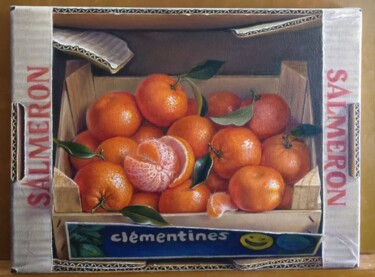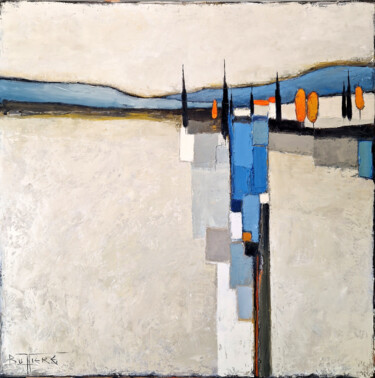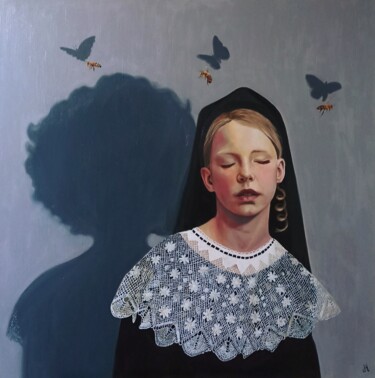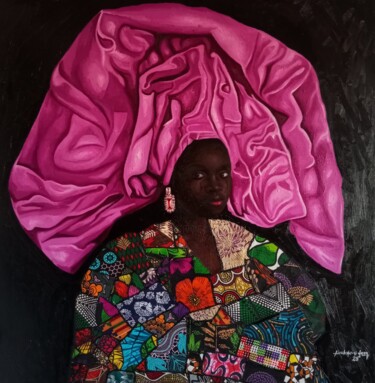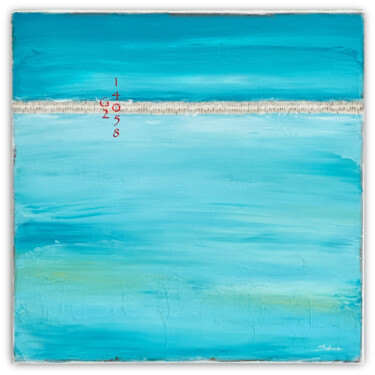Too often, art criticism has paid little attention to a meaningful comparison between academically trained artists and those who are self-taught. In this instance, we aim to break with this tradition, offering an innovative and impartial analysis that does not seek to assert the superiority of one category over the other, but rather to explore the many paths through which talent manifests itself.
This comparison is made possible by examining three main techniques: painting, sculpture, and photography. For each art form, two or more works will be placed in dialogue, sharing a similar aesthetic or theme, though created by artists with diverse backgrounds.
Paintings will be compared both in terms of style and subject matter, highlighting how artists from different backgrounds can address similar themes and movements using unique techniques and approaches. The sculpture section will analyze the representation of the human figure, exploring how artists with opposing educational backgrounds interpret the body, emphasizing both the differences and similarities in their treatment. Finally, photography will compare two female artists, one with an academic education and the other self-taught, showing how their perspectives on the world are reflected in their images, despite originating from different experiences and pathways.
At this point, I invite you to discover how talent can emerge in unexpected ways, regardless of the educational background: this will be an opportunity to gain new insights and view art with fresh eyes!
 "TRUST IN TECHNOLOGY" (2024) Painting by Hu/Lie
"TRUST IN TECHNOLOGY" (2024) Painting by Hu/Lie
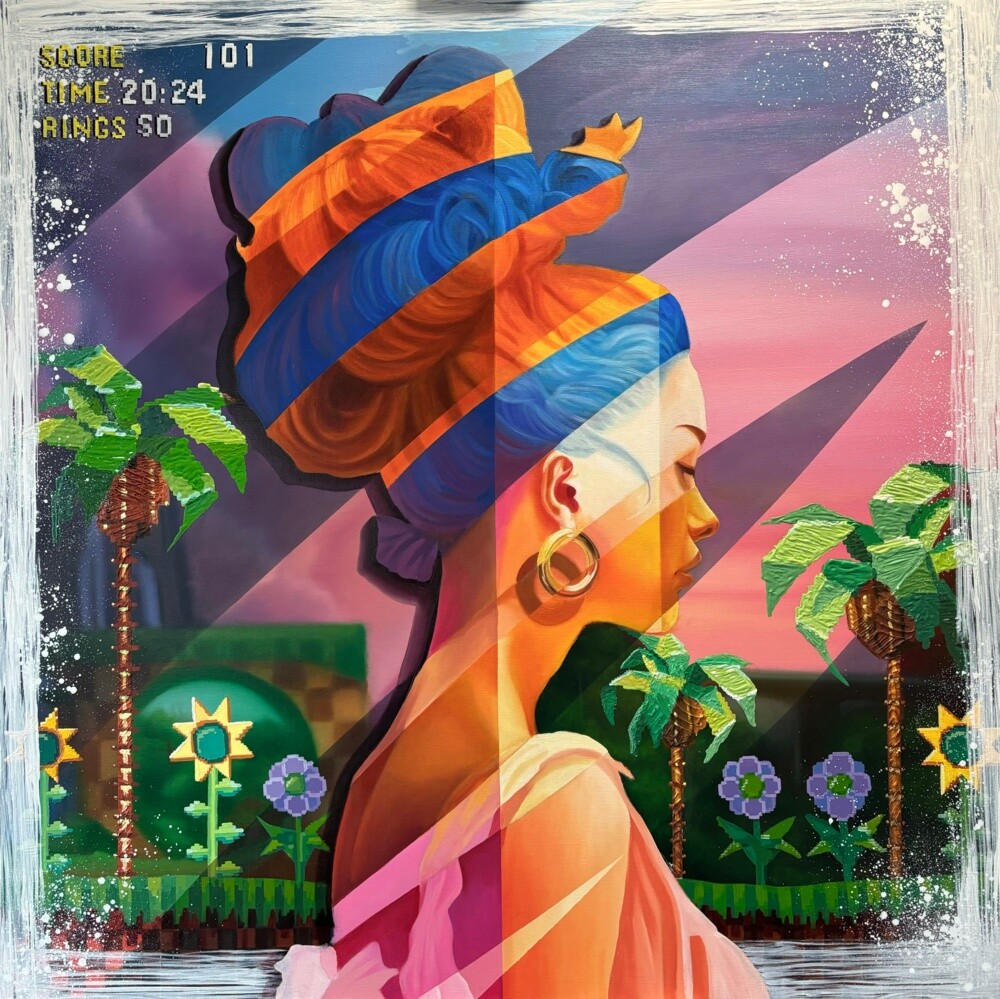 La Colline Verte (2024) Painting by di Yannick Aaron
La Colline Verte (2024) Painting by di Yannick Aaron
The Street Art of Hu/Lie and Yannick Aaron
Street art is a "diverse world," populated mostly by self-taught artists who carve their path through experience and experimentation, often working outside the formal confines of traditional art institutions. However, there are also many notable figures within the movement who have received academic training, such as Hu/Lie, an artist recognized for his critical perspective and mastery of various techniques. In this comparison, we will explore one of his works alongside those of Yannick Aaron, a fellow artist on Artmajeur, who represents the self-taught side of street art.
Hu/Lie, born in 1975 in France and trained at the Faculty of Fine Arts in Strasbourg, delves into the relationship between humanity and the modern world. His use of ephemeral materials and intense colors fosters a profound emotional connection with the audience. In his work "Trust in Technology," he employs oil and acrylic on canvas to address a very relevant topic: climate change denial and the disconnection between our awareness of environmental crises and our daily actions.
The internal mechanisms of rejecting such change emerge powerfully through the use of color: the subject's face is partially obscured by a chromatic distortion, rendering its expression enigmatic and fragmented—a symbol of the uncertainties and contradictions that dominate our relationship with technology and the environment.
This aspect contrasts with Yannick Aaron's "La Colline Verte," where the color blue passes through the human figure transparently, like a wave merging harmoniously with the surrounding environment. Both works explore the relationship between humanity and the world, but they do so in opposite ways: Hu/Lie emphasizes fragmentation and disconnection, while Aaron explores fusion and symbiosis.
Finally, speaking of the self-taught Yannick Aaron, born in 1985 in Fontainebleau, he developed his style starting from the world of graffiti, progressively enriching it with an intersection of geometric shapes and chromatic variations.
 No. 1381_Untitled (2024) Painting by Guido Lötscher
No. 1381_Untitled (2024) Painting by Guido Lötscher
 Abstract-211 (2023) Painting by Nivas Kanhere
Abstract-211 (2023) Painting by Nivas Kanhere
The Abstraction of Guido Lötscher and Nivas Kanhere
Did you know that some of the greatest abstract painters in art history were self-taught, while others received formal academic training? For example, François Morellet, celebrated for his geometric works, was self-taught. On the other hand, Wassily Kandinsky, a pioneer of abstract art, studied in some of Europe’s finest art schools, refining his theoretical understanding of color and form.
Following in this tradition, today we find artists with very different backgrounds, such as Guido Lötscher, a self-taught Swiss painter, and Nivas Kanhere, who has an academic background. The first painter on Artmajeur, Guido Lötscher, is a self-taught artist whose piece "No. 1381_Untitled" shows the application of multiple layers of paint, subsequently scraped and overlapped to create texture and depth—perhaps intended to evoke the visual language of Richter.
Nivas Kanhere, trained at the Sir J.J. School of Art in Mumbai, seems closer to the Color Field example. He seeks to create a link between the sensory and the metaphysical, aiming to convey a contemplative calmness, created by layering colors and shapes to generate a dynamic balance, expressing both strength and quietude simultaneously. In fact, while Lötscher works with random overlays, Kanhere constructs his work with a denser, more structured texture, where each brushstroke seems to sculpt an emotional landscape, almost as if the painting were an abstract map of his experiences.
 The crab watches itself with its (2024) Painting by Babatunde Bakare
The crab watches itself with its (2024) Painting by Babatunde Bakare
 Breakfast with schrodinger (2020) Painting by Igor Skaletsky
Breakfast with schrodinger (2020) Painting by Igor Skaletsky
The expressionist portrait of Babatunde Bakare and Igor Skaletsky
What is the definition of the portrait genre? A portrait is an artistic representation of a person, aiming to capture the physical, psychological, and sometimes symbolic essence of the subject. It is one of the oldest art forms and can be figurative, stylized, or abstract, depending on the artist’s sensitivity and the historical context.
What is meant by expressionist portraiture? An expressionist portrait goes beyond mere realistic depiction, emphasizing the expression of emotions and the subjectivity of the artist. The goal is not to faithfully represent the subject's physical traits, but rather to convey emotional states, inner tensions, and the subject's psychological depth through distortions, vivid colors, and bold brushstrokes.
With this classic preamble, it’s time to introduce the works of two Artmajeur artists on this theme: Babatunde Bakare, a self-taught Nigerian artist, and Igor Skaletsky, a Russian artist with academic training. Bakare’s piece, "The Crab Watches Itself with Its", uses oil and Ankara fabric on canvas to explore the genre of expressionist portraiture. It combines African figurative tradition with contemporary visual language. The model, characterized by a deformed and intensely expressive face, evokes a deep sense of cultural belonging, where the vibrant colors and traditional fabrics are not just decorative but meant to highlight the richness of ethnic roots.
In contrast, Igor Skaletsky, who trained at the Moscow State Academy of Arts, uses collage and acrylic techniques to blend photography and painting, manipulating the boundaries between the real and the imaginary. In "Breakfast with Schrödinger", Skaletsky creates a surreal scene, where a convivial human figure is altered by an abstract mask. The work exemplifies how expressionism can be combined with irony and imagination, inviting the viewer to question reality and identity.
It becomes evident that while Babatunde Bakare focuses on local materials and figurative distortion to emphasize cultural richness and inner struggle, Igor Skaletsky plays with absurdity and irony, creating surreal worlds where the human portrait becomes an enigmatic symbol.
 N°361 (2021) Sculpture by Maxime Plancque
N°361 (2021) Sculpture by Maxime Plancque
 Babyfoot XS (2024) Sculpture by Idan Zareski
Babyfoot XS (2024) Sculpture by Idan Zareski
The sculptures by Maxime Plancque and Idan Zareski
Did you know that some of the world’s greatest sculptors have followed very different educational paths? Henry Moore, famous for his monumental abstract sculptures, received academic training at the Leeds School of Art and later at the Royal College of Art in London. In contrast, William Edmondson, a renowned American sculptor, was entirely self-taught. Edmondson began sculpting without any formal artistic education, using rudimentary tools like railroad spikes and hammers to create religious sculptures and tomb figures. In 1937, he became the first African American artist to hold a solo exhibition at the Museum of Modern Art (MoMA) in New York.
In the contemporary world of Artmajeur, French artist Maxime Plancque represents an example of an academically trained artist. His metal sculptures reflect his simplified figurative approach, with subjects reduced to minimal silhouettes. In his sculpture "N°361", for instance, the bodies are almost entirely devoid of anatomical details, and their thin legs give the impression of movement and lightness, despite being made from heavy steel.
On the other hand, Idan Zareski, a self-taught artist, draws inspiration from various cultures. His sculpture "Babyfoot XS", part of the Bigfoot series, exaggerates certain body parts, such as the feet, while still maintaining a realistic representation of the human figure. Through this style, Zareski captures the innocence of childhood with a seated figure, whose oversized lower limbs are meant to symbolize life's journey and the footprints we leave behind.
Finally, while both works amplify the human form, "N°361" reduces the figure to a stylized abstraction, pushing the viewer’s imagination to interpret the minimal shapes and implied movement. In contrast, "Babyfoot XS", though exaggerating the feet disproportionately, remains faithful to the real form of the body, retaining details like facial expression and posture.
 Chamallow I (2023) Photography by Mathilde Oscar
Chamallow I (2023) Photography by Mathilde Oscar
Photography by Bettina Dupont and Mathilde Oscar
We have reached the conclusion... with two extraordinary photographic works by French artists: the self-taught photographer Bettina Dupont and the academically trained Mathilde Oscar. In this particular case, the comparison between the two artists is made possible by their personal and unique approach to the theme of the sacred, a subject addressed by both, but with very different visual languages and meanings.
Mathilde Oscar, born in Paris in 1980, has a solid background in art history and graphic design. Her passion for painting and her academic training are clearly reflected in her photographs, which blend the codes of classical painting with digital art. "Chamallow" I is a perfect example of her style: ironic, anachronistic, and visually captivating. In this work, Oscar addresses the theme of the sacred with subtle humor and a surreal touch. The representation of the model, surrounded by traditional sacred symbols like a halo and an immaculate heart, is ironically contrasted with modern and frivolous details such as marshmallows.
In contrast, Bettina Dupont, born in 1996, is a self-taught artist who began her creative journey in conceptual photography. Her approach to the sacred is much more symbolic and reflective compared to Oscar’s. In "Don't Worry My Queen 03/20", Dupont uses a simple yet powerful composition, with strong references to religious symbolism and popular culture. Her works explore complex themes such as the human condition, the relationship with time, good and evil, and our perception of contemporary reality.
The photograph portrays a surreal scene where a figure floats, suspended in a dreamlike universe, with clouds and arrows evoking biblical and mythological references. Every detail is carefully considered to provoke deep reflection in the viewer. Dupont invites the audience to question what they see, leaving room for personal interpretation.

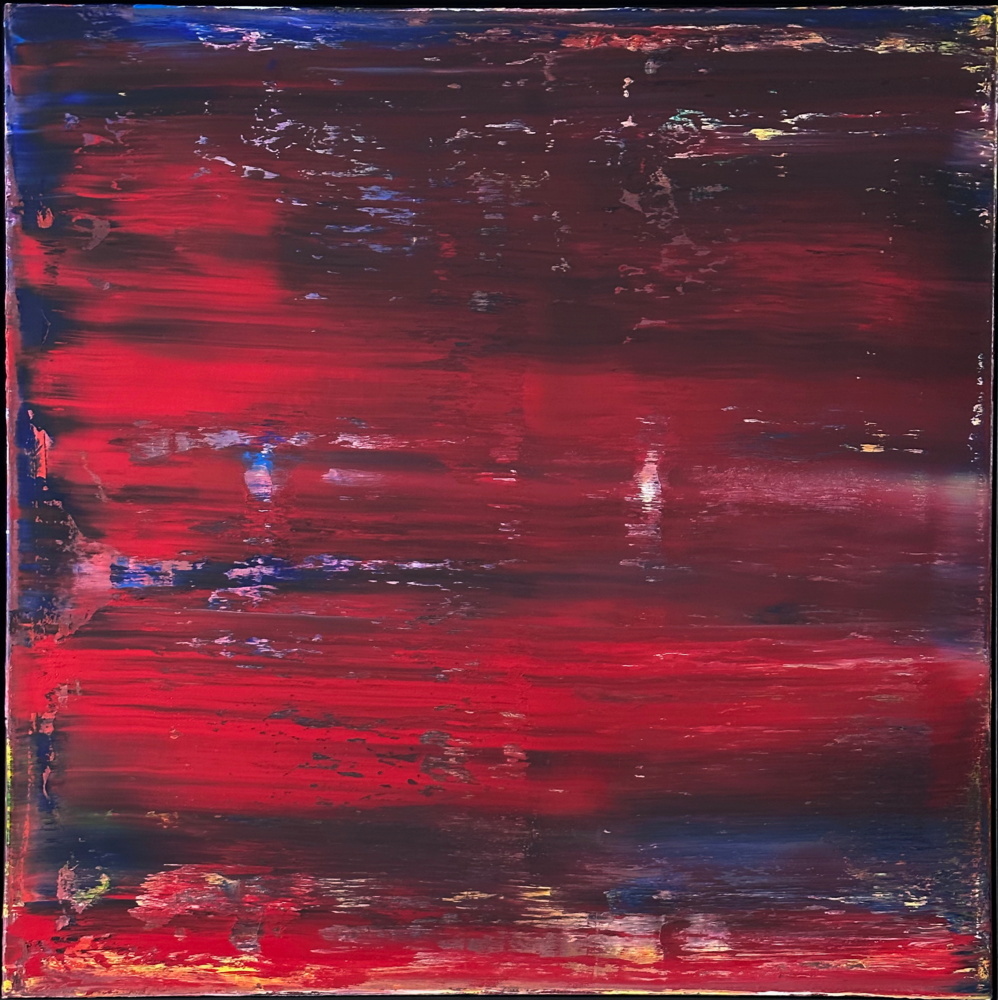
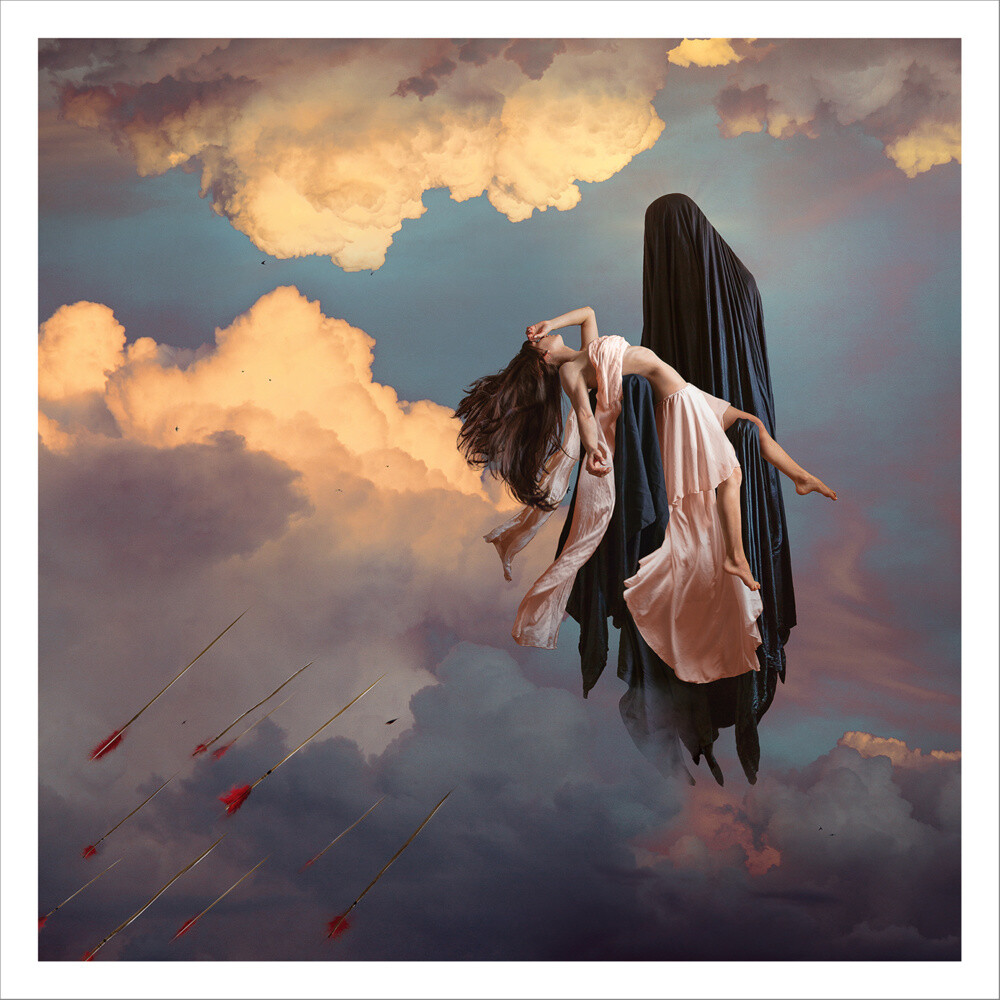
 Olimpia Gaia Martinelli
Olimpia Gaia Martinelli


